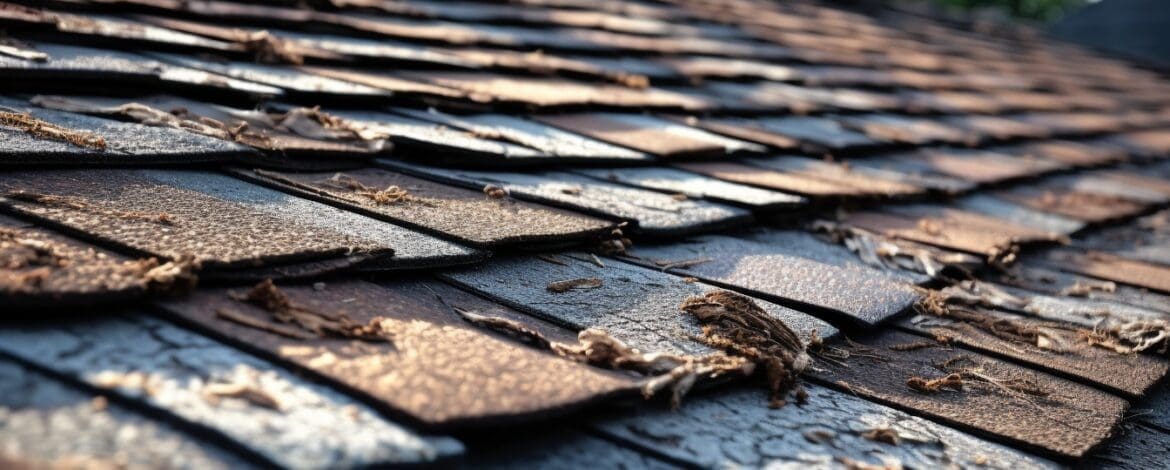Deciding when to get a roof replacement can be a tricky decision. A sturdy roof is an integral component of your home’s structure. It’s the first line of defense against the harsh and sometimes brutal Florida climate. A sturdy roof must endure year-long sunshine, hot, humid weather, and hurricanes. Therefore, your roof is crucial in maintaining your home’s integrity, safety, and functionality.
Of course, waiting until you see visible roof damage or notice leaks means a roof replacement is crucial. But savvy homeowners in the Sunshine State don’t leave off getting a new roof until it’s too late. Florida’s climate means that roof lifespans are shorter than other areas of the country. Therefore, understanding the lifespan of your roof and arranging to get a new roof before costly water damage occurs is vital.
This article provides helpful information on when it is time to get a new roof for your home. It includes tips on determining if your roof needs replacing, signs of roof damage, and the importance of regular roof maintenance.
the Lifespan of Your Current Roof & when to consider roof replacement
Common roofing materials have varying lifespans. And some types of roofing materials are better suited to Florida’s climate than others. Here is how long you can expect popular roofing materials to last in Florida:
- Asphalt shingle roof: 15 to 30 years
- Wood shake shingles: 10 to 40 years
- Metal roofs: 15 to 50 years
- Concrete tiles: 30 to 50
Regular maintenance is essential for extending your roof’s lifespan. Regular roof inspections help identify potential problems before they become major repair issues. Also, it’s important to look for signs of wear and tear, such as loose, missing, or broken shingles, loose facings, and extensive damage caused by wind or torrential rain.
Additionally, cleaning your roof regularly to remove dirt, debris, and any buildup of moss or algae is vital to prevent premature roof material deterioration.
Therefore, regular maintenance helps extend the life expectancy of your roof, saving you thousands of dollars in the long run.
Telltale Signs You Need a Roof replacement
How can you determine if you need a new roof? Signs of roof damage include missing or damaged roof shingles, visible water leaks, or signs of water damage like water stains on ceilings. However, simple roof repairs could remedy the problem without worrying about a replacement.
What signs of damage indicate it’s time to think about a new roof? Here are five red flags that you should think seriously about a roof replacement:
- Sagging roof lines: Water damage may have damaged the roof structure over time, weakening your roof and causing it to sag.
- Aged appearance: Do you see missing shingles, curled composite shingles, or cracked roofing materials? If so, it’s time to call a local roofing contractor to inspect the roof.
- Frequent leaks: When you must frequently call roofing professionals to repair leaky roofs, it’s time to consider replacing the roof.
- Granules in the gutter: Do you notice granules accumulating in the gutter during an annual cleanup? This is a sign that roofing shingles are nearing the end of their lifespan.
- Daylight visible through roof boards: Noticing specks of sunshine in the attic is a serious warning sign that the roof has severe structural issues.
The Harsh Reality of Florida’s Weather on Roofs
Florida is not called the Sunshine State for nothing. And Floridians love the year-long sunshine and beautiful weather. But the tropical climate also comes at a price. Intense sunlight, high humidity, frequent tropical storms, and hurricanes significantly impact roofs. The harsh climate means more frequent roof repairs and paying high homeowners insurance in Florida.
Here are four ways the climate impacts your home’s roof:
- Intense sun and UV radiation: Asphalt shingles are prone to cracking under intense sunshine. The American National Standards Institute reports that the oily substance in asphalt shingles evaporates and crumbles when UV radiation damages it.
- Heavy rain and storms: Heavy rain can force moisture into the roof structure during bad weather. Over time, this increases the risk of leaks, water damage, and mold growth.
- High winds and hurricanes: Gale-force winds and driving rain can rip shingles and facings off roofs. Also, flying debris and falling trees can cause significant damage. Studies show that roof damage can occur in fairly light winds. Also, wind pressure and uplift during hurricanes can weaken roof structures. Interestingly, steep roofs perform better in hurricanes than low-slope roofs.
- Salt air corrosion: Florida homeowners in coastal areas also face another challenge — corrosion from salt spray. Studies show that salty air is a significant factor in the premature degradation of roofing materials in coastal communities.
Metal Roofs: An Economical and Durable Solution for Floridians
Metal roofing is an excellent option for homeowners in Florida. This type of roofing material is a long-lasting, dependable, and low-maintenance roofing solution. With Florida’s high humidity and hurricane-prone climate, it’s important to have a durable roof that can withstand extreme weather. Because it’s lightweight, it’s a more suitable replacement for a basic asphalt shingle roof than concrete or clay tiles.
Here are a few reasons to consider roof replacement costs of installing metal roofing:
- Longevity: Metal roofs are highly resistant to moisture, UV rays, and temperature fluctuations. This makes them superior to other roofing materials like asphalt or wood shingles.
- Energy efficiency: Metal roofs reflect solar radiation. This factor reduces heat absorption, helping to maintain a cooler indoor temperature. Therefore, a cool roof helps cut energy bills for air conditioning.
- Resistance to elements: A metal roof is highly resistant to high winds, rain, UV radiation, and temperature fluctuations. Metal roofs don’t rust when installed correctly and with the proper covering.
- Cost-effectiveness: Because of its durability and low maintenance requirements, metal roofs don’t require frequent repairs or replacement. Therefore, the higher upfront installation costs turn into long-term savings over the metal roof’s 50-year lifespan.
Other Factors to Consider when Replacing a roof
Here are other reasons why a sturdy roof replacement brings many benefits:
- Improve your home’s value
- Make your property more aesthetically appealing
- Get lower homeowners’ insurance for Florida homes
- Slash energy costs by installing a cool roof
- New roofing technologies mean enhanced protection against wind, rain, UV radiation damage, and hurricanes
Key Takeaways: Is it Time for a New Roof?
Florida’s tropical climate can take a toll on your roof. Therefore, arranging regular roof inspections with a trusted local roofing company is vital. This way, you can address minor repair issues and check for structural damage.
When considering getting a new roof, it’s worth considering a metal roof. The average roof replacement cost may be cheaper than you think. However, you get long-term benefits. They are long-lasting, dependable, and energy efficient.
Are you looking to replace your roof in the Tampa Bay, FL, area? If so, contact Code Engineered Systems today. Our experienced team will evaluate your roofing needs and provide a free estimate of the cost of a new roof. You can discuss the long-term benefits that come with installing a metal roof.




